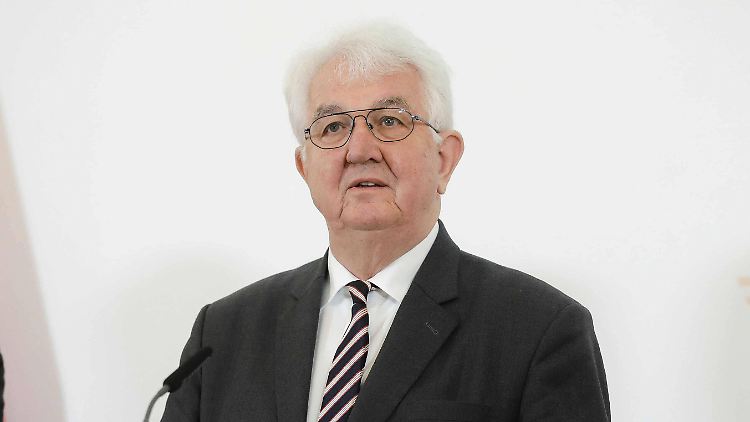Don’t turn around until summer?
Holzmann: ECB still lacks important data before cutting interest rates
April 3, 2024, 8:20 a.m
Listen to article
This audio version was artificially generated. More info | Send feedback
The ECB’s next interest rate meeting will take place on April 11th. The monetary authority always emphasizes its independence from the US central bank, but Austria’s central bank chief is certain that it will probably not rush forward when it comes to interest rates – and gives reasons why.
According to Austria’s central bank chief Robert Holzmann, the European Central Bank (ECB) will only have the broad data base required to decide on an initial interest rate cut in June. This included important data on the development of wages and inflation in the euro area, said Holzmann in an interview with the Reuters news agency. “If the data allows, a decision will be made.” He has no fundamental objections to easing monetary policy in June. “April is not on my radar screen because we don’t have enough hard data to make such a decision.”
The ECB’s next interest rate meetings are on April 11th and June 6th. On June 12th, the US Federal Reserve will decide how to proceed after a long period of high interest rates. “We are definitely independent of the Fed and make our own decisions,” Holzmann said. However, he pointed to studies that show that the effect of an ECB interest rate cut would be smaller if the Fed adopted a different monetary policy approach on the other side of the Atlantic. Therefore, it is useful, but not necessary, if the Fed moves forward. “That means if the data shows a strong environment for a cut through June, a week before the Fed makes its own decision, then we’re pretty likely to do it and hope the Fed follows suit.”
The economy in the USA is doing well, the labor market is still very tight and underlying inflation remains well above two percent. “So the US has good reason to be cautious.” In the euro zone, however, according to Holzmann, economic dynamism is much lower. This is also one of the reasons that enabled the ECB to initiate the interest rate turnaround more quickly. Most recently, the inflation rate in the 20-country community was 2.6 percent. That is no longer far from the target of two percent that the ECB is aiming for as the optimal level for the economy.
Inflation is expected to continue to weaken
The latest forecasts from the ECB economists in March assume that inflation in the euro area will weaken from 5.4 percent in 2023 to 2.3 percent there and then to 2.0 percent in 2025. “It’s possible that inflation will actually develop better, but let’s see,” said Holzmann. An important factor is the development of wages. “Wages are definitely a risk in terms of inflation, but we’ve also seen that as companies lose their pricing power, they have to accept lower prices.”
For Holzmann, the discussion about increasing the minimum reserve requirements for commercial banks is not yet over. “I think it is unacceptable for the current structure to place a heavy burden on central banks’ financial results.” Financial institutions in the euro area are obliged to keep a certain amount of money in their account with the respective national central bank without interest. This interest-free minimum deposit is currently one percent of customer deposits. According to Holzmann, three to four billion euros in transfer payments were made to the banking system in Austria in 2023 via the deposit rate. There is no economic justification for this. “So the question is what can we do about it?” In his view, the interest-free minimum reserve should therefore be increased to five to ten percent of customer deposits.

